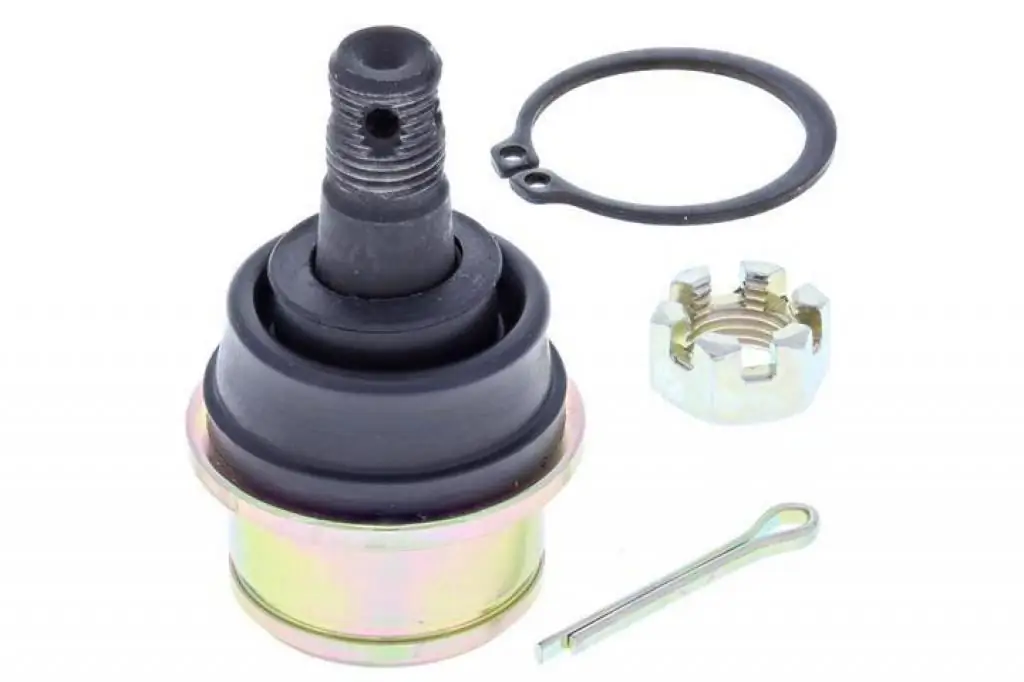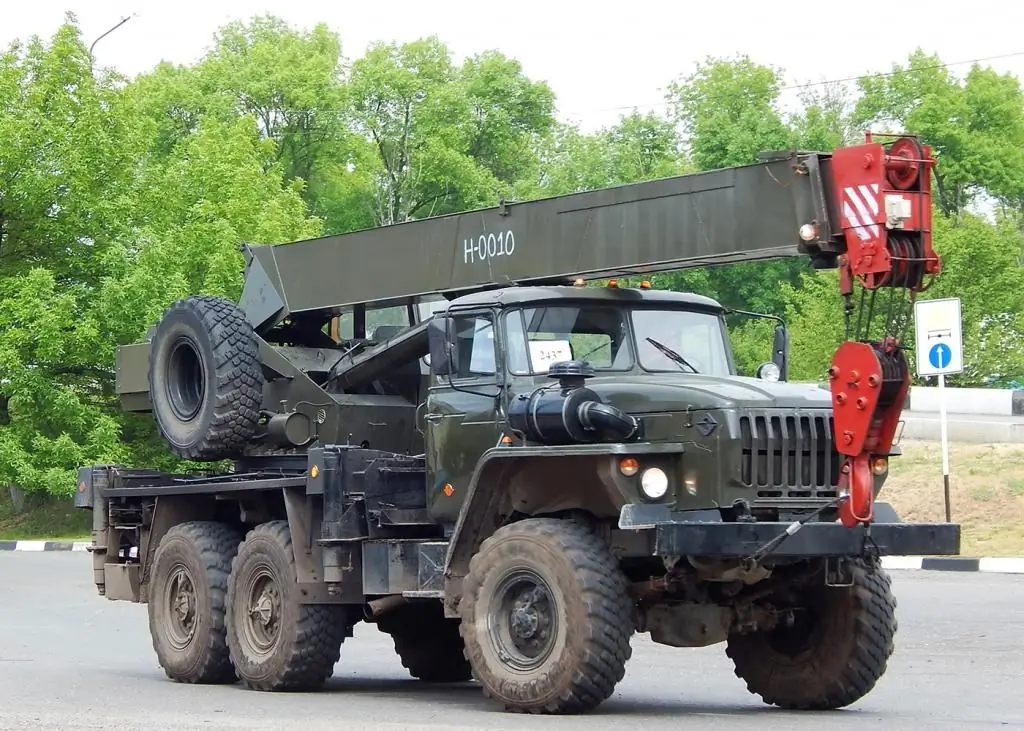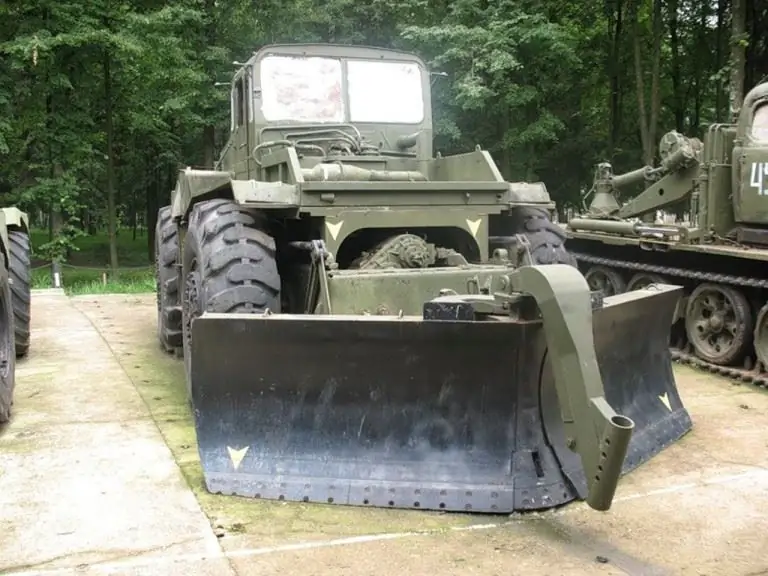2026 Author: Erin Ralphs | [email protected]. Last modified: 2025-06-01 05:35:55
In 1985, the Ulyanovsk Automobile Plant began to produce an ambulance minibus, which received the UAZ-39629 (3962) index.
Ambulance SUV
The "new" SUV (4x4) was the result of the development of the UAZ-452 A and, like its predecessor, was intended for the medical service. In appearance, the cars were very similar: a newer model can be distinguished only by the missing internal railings on the windows. Another distinguishing feature appeared a little later - the central side windows with swivel windows on the port side were replaced with monolithic ones.

In general, there is nothing particularly remarkable in the appearance of the UAZ-39629 - everything is simple and without frills. Apparently, no one thought about the beauty of the car when it was created.
The interior of the cabin fully corresponds to the external data - concise, practical, there is nothing superfluous, and everything is thought out to the smallest detail. The driver's cab is separated from the sanitary room by a partition into which a sliding glass is inserted. Folding benches are provided in the medical part of the salon, where from 7 to 9 people can be accommodated or on specialfastenings to install two stretchers.
The engine in the UAZ-39629 is located under the cover in the cab to the right of the driver. This arrangement of the motor has certain advantages: in winter, the power unit becomes a source of additional heat for heating the passenger compartment, and in the event of a breakdown, it provides ease of repair, and in almost any weather and regardless of the time of day.
The driver's seat does not differ in special amenities. The instrument panel does not shine with the novelty of the design either, however, it contains all the sensors necessary for the driver.

In a word, if you remove the stickers from this car that say it belongs to medicine and repaint it in khaki color, then it will pass for a military vehicle, traditionally distinguished by its asceticism.
UAZ-39629: specifications
Two cars, UAZ-3962 and 39629, are almost the same. The difference lies only in the engines: the UAZ-39629 has a stronger engine - UMZ-4218 with a total cylinder capacity of 2.89 liters and a power of 86 liters. With. (at 4 thousand rpm). The power unit - in-line, four-stroke - is equipped with a carburetor-type fuel system.
Clutch - single disc, friction, dry with hydraulic drive.
Gearbox - mechanical, four-speed, fully synchronized. The box is controlled manually, carried out by means of a lever from the driver's cab.
"Razdatka" - two-stage, with front axle off.
The UAZ-39629 has a spring suspension front and rear,supplemented with shock absorbers.
Brake system - dual-circuit, hydraulic, drum type with vacuum booster.
Optional equipment
On the roof of the car are installed: a passenger compartment ventilation hatch, a spotlight and a blue flashing beacon.

The following items were installed from special medical equipment: an operating lamp, an ADR-1200 apparatus (for forced ventilation of the lungs), an electrocardiograph, a defibrillator, a wheelchair with a removable stretcher installed on it.
UAZ-39629: specifications
- Drive - complete with 4x4 formula.
- Base - 2300 mm.
- Dimensions (mm) - 4440 x 2101 x 1940 (length, width, height). Height including spotlight is 2240 mm.
- Clearance (mm) - 220.
- Road gauge (mm) - 1445.
- The weight of the equipped car is 1825 kg.
- Gross weight of the "nurse" - 2500 kg.
- The fuel supply is contained in two tanks: one for 56 liters, the second for 30.
- The maximum possible speed under the condition of the total mass is 117 km / h.
- Average fuel consumption is 15.8 liters per 100 km.
Since April 1997, the automobile plant decided to take care of the driver, passenger (doctor, paramedic) and even the person accompanying the patient. They replaced the old, not very comfortable seats with more comfortable ones with soft upholstery. Everything else remains unchanged.
Recommended:
Front shock absorber for UAZ "Patriot": purpose, specifications, tips for choosing

The UAZ "Patriot" car with a capacity of up to 9 people and a load capacity of up to 600 kg has a high cross-country ability. This car can be used for different purposes. Convenience, comfort of movement on any surface depends on the suspension, which bears the main load. It directly depends on the shock absorbers. Consider the features of these devices, how to replace the front shock absorbers of the UAZ Patriot, and which ones are better to choose
Ball pin: purpose, description with photo, specifications, dimensions, possible malfunctions, dismantling and installation rules

When it comes to the ball pin, it means the ball joint of the suspension of the car. However, this is not the only place where this technical solution is applied. Similar devices can be found in the steering, in the guides of the hoods of cars. They all work on the same principle, so the diagnostic and repair methods are the same
KS 3574: description and purpose, modifications, specifications, power, fuel consumption and rules for the operation of a truck crane

KS 3574 is an inexpensive and powerful Russian-made truck crane with wide functionality and universal capabilities. The undoubted advantages of the KS 3574 crane are functionality, maintainability and reliable technical solutions. Despite the fact that the design of the truck crane cab is outdated, the car looks impressive thanks to the high ground clearance, large wheels and massive wheel arches
Wheel tractor MAZ-538: description, specifications, purpose and history of creation

Wheel tractor MAZ-538: description, history of creation, design features, photo. MAZ-538: technical characteristics, purpose, device, type of suspension, engine and gearbox
Towbar for UAZ "Patriot": Purpose and description

At any moment on the road, it may happen that the car breaks down and will not be able to continue driving on its own. It is in such cases that the towbar on the UAZ "Patriot" or on any other car helps a lot

